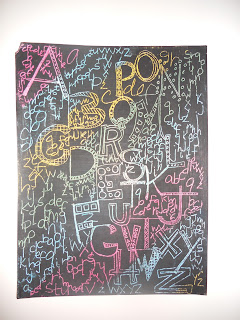Who doesn't enjoy a little fabric art? I'm sure my piece will not influence you any direction. But there amazing batiks out there that are certain to taint your view.
This little bad boy is simple a piece cut from a sheet. For my resist I used the none expensive and less messy flour and water mixture. Usually wax is used, but this seemed to turn out just as well. For my dye I used tempera paint to create my own original color and dabbed on using a sponge brush. After proper drying time-rinsed it out and behold, my creation. Have some fun with this one. Think what function this could serve in your life before planning out our batik.












